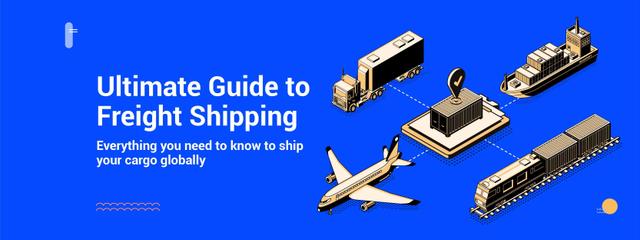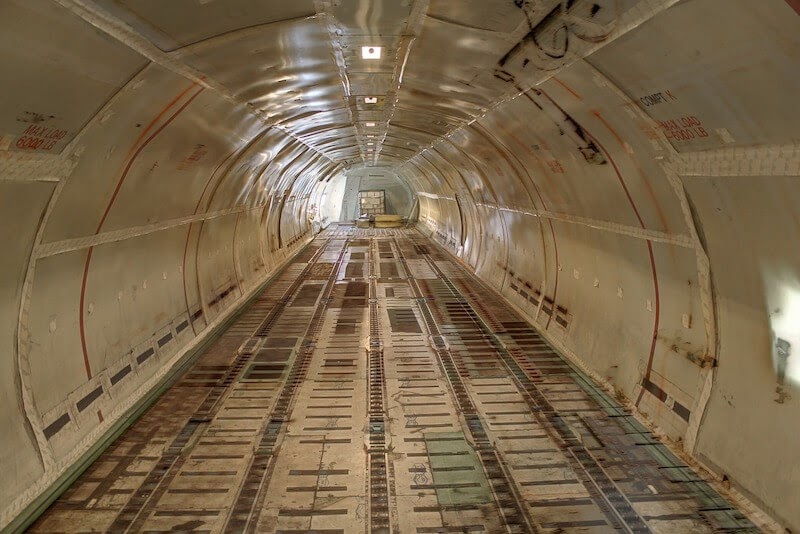
Emerging Markets: Opportunities & Challenges
By taking a strategic and flexible approach, businesses can capitalize on the opportunities presented by emerging market economies' dynamic...
A complete guide to explain what Exporters / Importers need to know about ocean freight and shipping. Benefits, different modes of shipping and multimodal/intermodal.

A common word you hear in import-export parlance is freight. The Oxford Dictionary defines freight as “goods transported in bulk by truck, train, ship, or aircraft”. Given that freight is also defined as the “charge for transport by freight”, we will use the term freight shipping when talking about the process of transporting goods by land, sea and air.
This blog serves as a comprehensive guide to freight shipping and the five modes of shipping cargo – by sea, air, road, rail and barge. In this blog, we will discuss:
From food to fuel, machinery to minerals, textiles to automobiles, goods of any kind can be shipped as freight. But to qualify as a freight shipment, the goods must meet certain conditions. Generally, they must weigh more than 68 kg (150 pounds) and be larger than 30 in x 30 in x 30 in. But these standards might differ across shipping modes and carriers. For example, air freight carriers require a shipment to weigh a minimum of 45 kg. Anything smaller qualifies as a parcel. As opposed to freight, which is moved in bulk, a parcel is typically shipped in a box, one at a time, by a parcel carrier such as FedEx, UPS or DHL.
Freight shipping is the bedrock on which international trade rests. It is a gift not only to economies and countries but to each exporter and importer for these reasons:
The five modes of transporting cargo are:

A container ship off the waters of Seattle, USA. (Photo by Andy Li on Unsplash)
Ocean freight shipping accounts for close to 90% of international trade by volume, making it the behemoth of international shipping. Under this mode of shipping, large volumes of goods are packed into containers and transported in ships across the globe. It is the most efficient and economically-viable way of moving large volumes. It also has a fairly good safety record and is considered less polluting than other shipping modes such as air.
Shipping containers, commonly made of steel and sometimes of aluminium, come in standard sizes specified by the International Organisation for Standardisation. The most commonly used containers are the 20-foot, 40-foot and 40-foot high cube containers.

When you talk about ocean freight shipping, there are two ways of doing it:
LCL (Less than Container Load) shipping
In a nutshell, LCL shipping is a mode of transporting moderate volumes of cargo in a shared container. Because your shipment is not large enough to take up an entire 20-foot or 40-foot container, you share a container with other shippers. This brings down the cost of transportation because you only pay for the space you take up.
FCL (Full Container Load) Shipping
As opposed to LCL shipping, FCL shipping is a mode of transporting large volumes of cargo in a container that is exclusively at the shipper’s disposal and is not shared with anyone else. As a rule, FCL shipments are larger than LCL shipments. FCL shipping is usually more expensive because you pay for the entire container.

The empty cargo hold of a freight aircraft. (Photo by Lenzpointer on pixabay)
Compared to shipping by sea, air freight shipping accounts for less than 1% of global trade volume, but that minuscule volume translates to 35% of world trade by value. Even in the face of falling global trade volume and economic activity, the air freight industry is poised to grow in the coming years on the back of strong demand for manufacturing exports. The International Air Transport Association (IATA), in fact, expects e-commerce to be a major driver of air cargo growth. The reason being that air shipping serves markets and businesses that demand speed. Airplanes – cargo planes and passenger aircraft – are arguably the fastest way to get your cargo from one place to another. Naturally, it comes for a price.

A semi-trailer in Australia. (Photo by hbieser on pixabay)
If ships and planes are considered the distance runners of international shipping, then trucks are the all-rounders. Trucks and trailers are a universal cargo transport solution, ferrying all kinds of goods seamlessly within and across borders. They move volumes both small and large on routes both short and long. They are the only mode of transport capable of making door to door deliveries. They also have the greatest reach, making inroads into the world’s remotest regions.
As in the case of ocean shipping, freight truck services are categorised as:
FTL (Full Truckload): When a truck carries a single shipment, it is called FTL. An FTL shipment is generally large, though other factors such as cargo security and transit time might drive a shipper’s decision to make an FTL booking. Freight is charged on the basis of distance.
LTL (Less than Truckload): In contrast, when a truck carries more than one shipment belonging to more than one shipper, it is called LTL. It is cheaper than FTL because the shipper pays only for the space he takes up.

Partial Truckload / Volume LTL: When a shipment does not require a full truck but is more voluminous than your average LTL shipment, you can opt for partial truckload or volume LTL. Both are similar with a few small differences. For example, a partial truckload shipment must comprise eight to 18 pallets while an LTL consignment is smaller at a minimum of six pallets.
Trailer services: Trailer service providers pick up containers from container yards and drop them off at the shipper’s warehouse for stuffing. They also transport the stuffed containers to the port or terminal for loading on the main carrier. Trailer pick-up and drop-off services are the lifeblood of intermodal shipping, which is the combination of two or more modes of shipping for the movement of goods. Road and ship is an example of intermodal shipping.

A cargo train passes by a field in Canada. (Photo by James Wheeler from Pexels)
Trains make up the other half of road transportation after trucks. A big-volume, long-distance player, rail transport is one of the most cost-effective and environment-friendly modes of freight shipping. A single freight train can carry the equivalent of 250-400 truckloads of cargo. Rail transport is an asset for countries with large land masses such as India, China and the US.

A barge loaded with metal construction material on a canal. (Photo by Kelly Lacy from Pexels)
The third arm of inland transportation after trucks and trains, barges – which are long, flat-bottomed cargo boats – are an efficient and safe way of moving cargo in bulk. Barges generally move on inland waterways such as rivers and canals but are now increasingly found in major sea ports.
Those were the five modes of freight shipping. However, the international shipping process often requires a combination of two or more modes of transportation for cargo to get from origin to destination. This is called multimodal or intermodal shipping. If, for example, you are sending a shipment overseas, the cargo might cover the main leg of its journey by ship or plane but it will need truck transportation for the journey from your factory to the port/terminal of origin and then again from the port/terminal of destination to the buyer’s warehouse. One of the main advantages of intermodal and multimodal shipping is that cargo can change transport modes without being handled. This lowers the risk of damage and also allows for speedy delivery. While intermodal and multimodal shipping are similar by definition, there are differences:
Multimodal shipping: The key difference from intermodal transport is that a single company/shipping provider is responsible for the entire shipping process under a single contract or bill of lading. This is also multimodal transport’s greatest advantage.
Intermodal shipping: Unlike multimodal transport, each carrier handles its part of the transport process under a separate contract.
Benefits: Shipper is at liberty to choose each carrier and negotiate the lowest rates, has the freedom to make environmentally-conscious decisions in carrier selection, more access to equipment, greater control over schedule